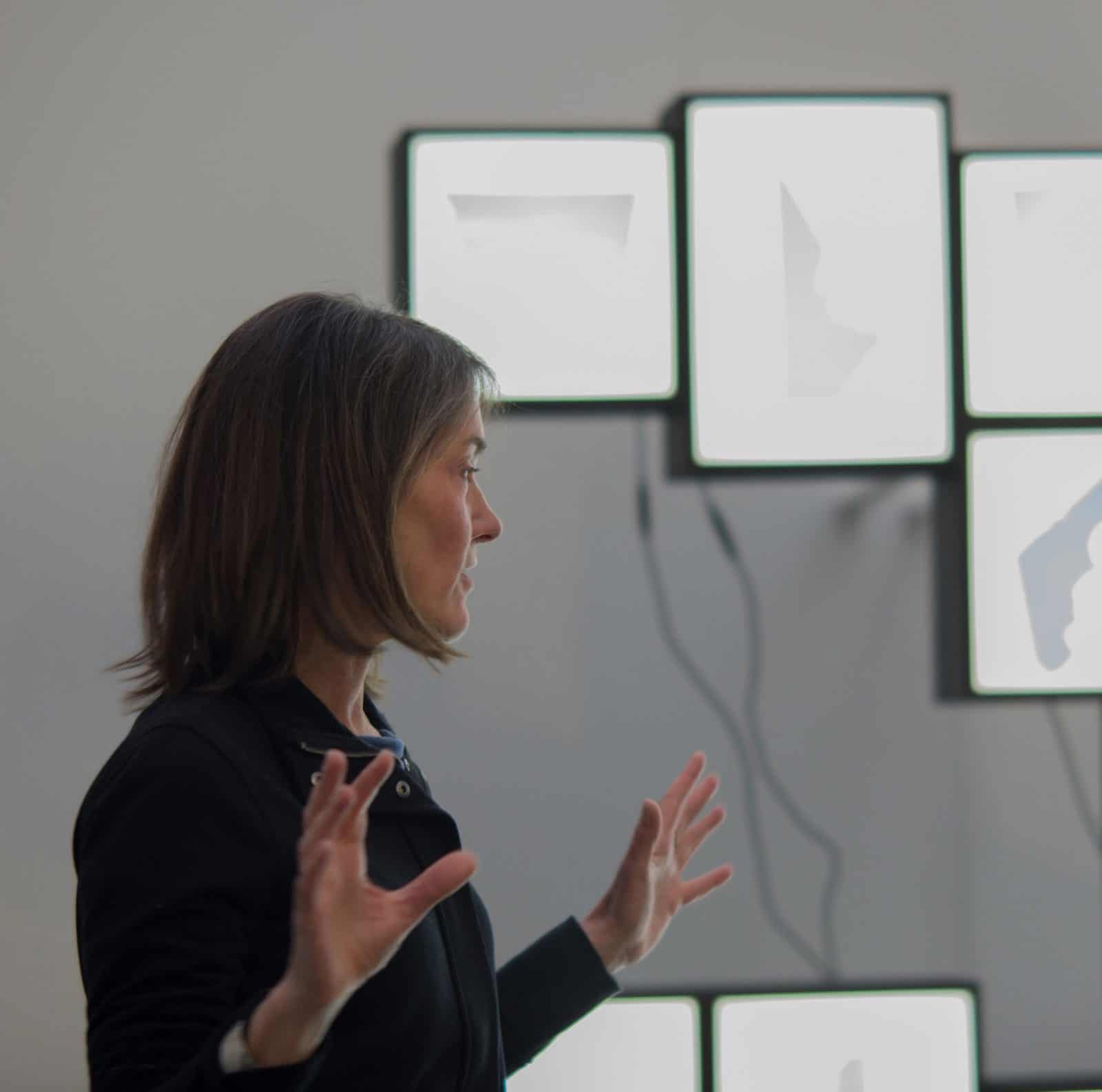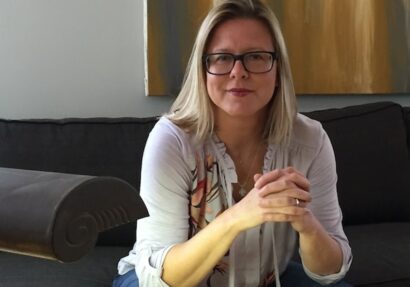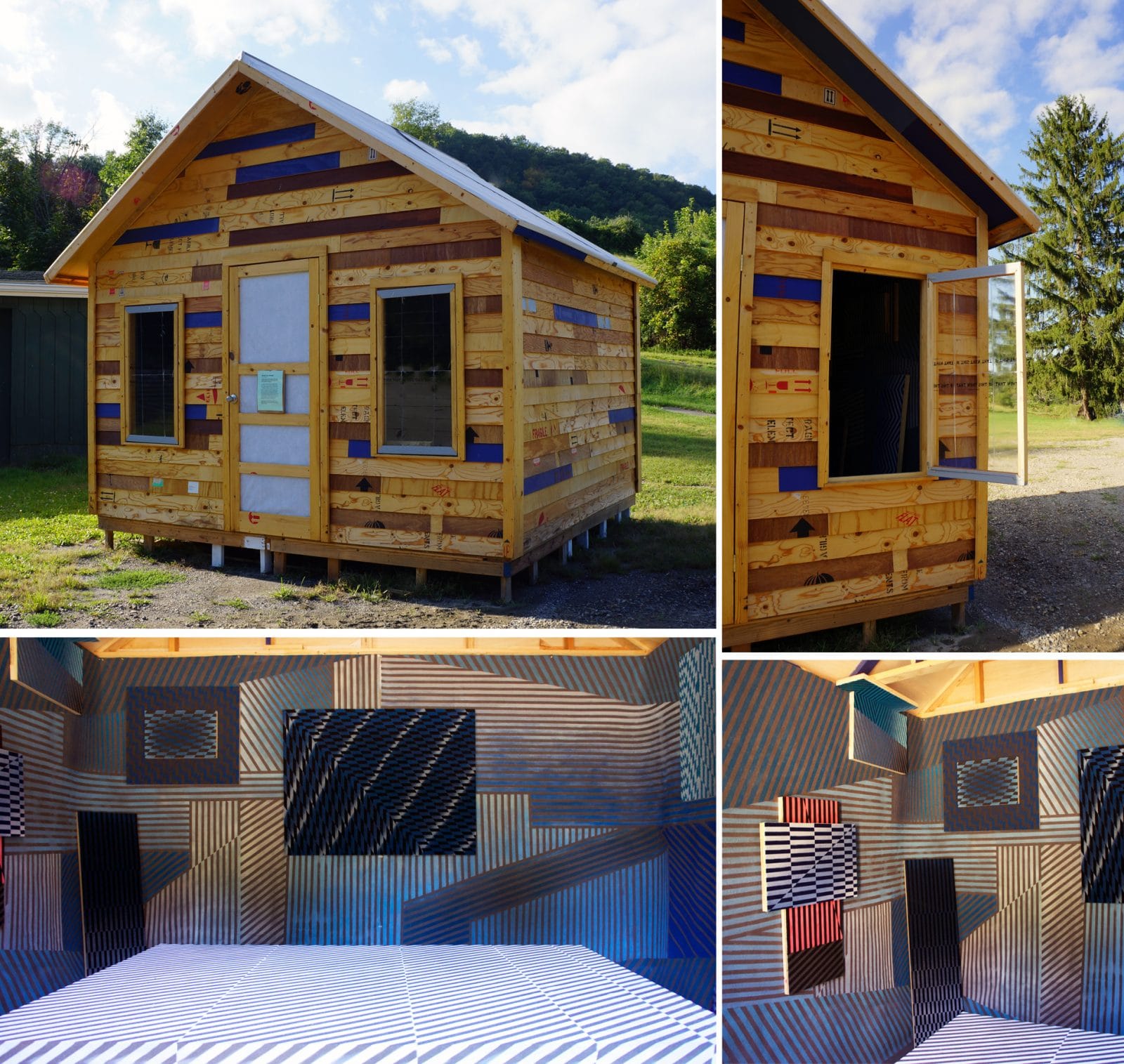Taking the leap into fine art after having a 9-5 job is a difficult decision, but this is exactly the leap that thriving artists need to make. For Leslie Hirst, a multi-media artist with over 30 years of experience in commercial and fine art, tells us about her recent CHF-funded exhibition “Objectively Speaking,” the importance of continuity between shows, following the inspiration without losing the nuts and bolts of actually doing the work, and her transition from graphic design to fine art and teaching Experimental and Foundation Studies at the Rhode Island School of Design.
Preparing for an Exhibition:
- Learn about the supply chain
- Determine location, transportation, target audience, and space restrictions
- Establish relationships with suppliers and potential partners
- Think about your presentation as you’re thinking about creation
- Plan ahead for unforeseen complications
On her recent exhibition “Objectively Speaking:”
- Interpreting the world and language through visual senses – synesthesia
- Inspired by Ludwig Wittgenstein’s famous quote, “The world is everything that is the matter,” and its implications for visual art and craft.
- Exhibition is about “Seeing the world through the physicality of language and bringing the presence of experience into play through language”
- Artist as inventor, engineer, and problem solver.
- How the CHF Business Accelerator Grant funded materials, shipping, and transport.
Components of branding
- Internal motivation in brand identity: “My understanding of the world comes from a variety of sources that are uniquely me…”
- Strong personal characteristic to a work: Commercial graphic design and cross-over to forms of language
- Making your interests viable and ensuring you’re the inventor of your career
- Crossing media without losing your brand identity
- “Every work that you create should extend into the next thing that you do.”
Making the leap from commercial art to fine art:
- Digital art vs. tactile and manual art
- Drawing from commercial art experience in your fine art practice
- Inherent need to communicate with the audience
- Teaching as a method to afford artwork
- Recognize the “relationship between lace and digital code” and the core of “all textile work is built upon the same systems that we recreate digital code with.”
What’s next:
- Stronger engagement with the community through public art work
- Reaching a broader cultural spectrum, more ages, more socio-economic levels, people of different education levels
- Establishing a solid track record as a fine artist







